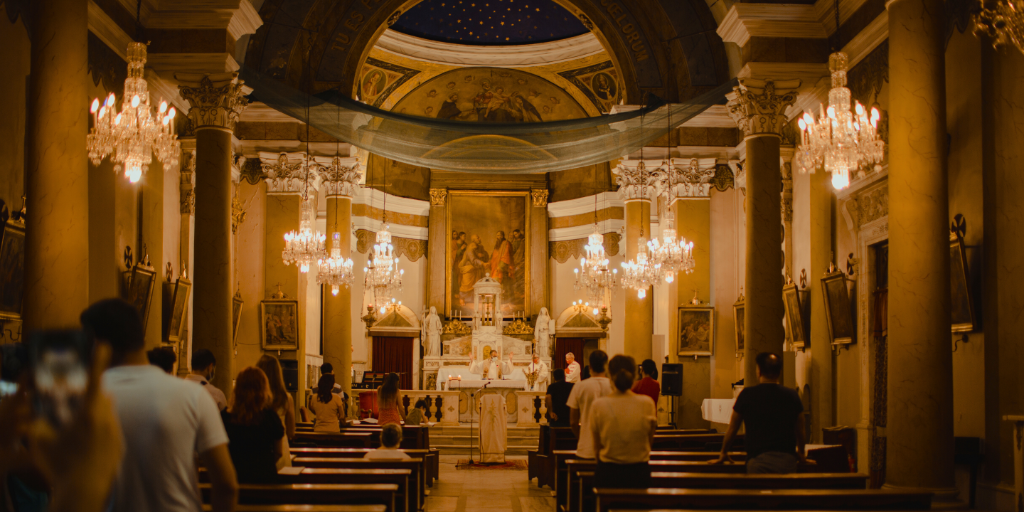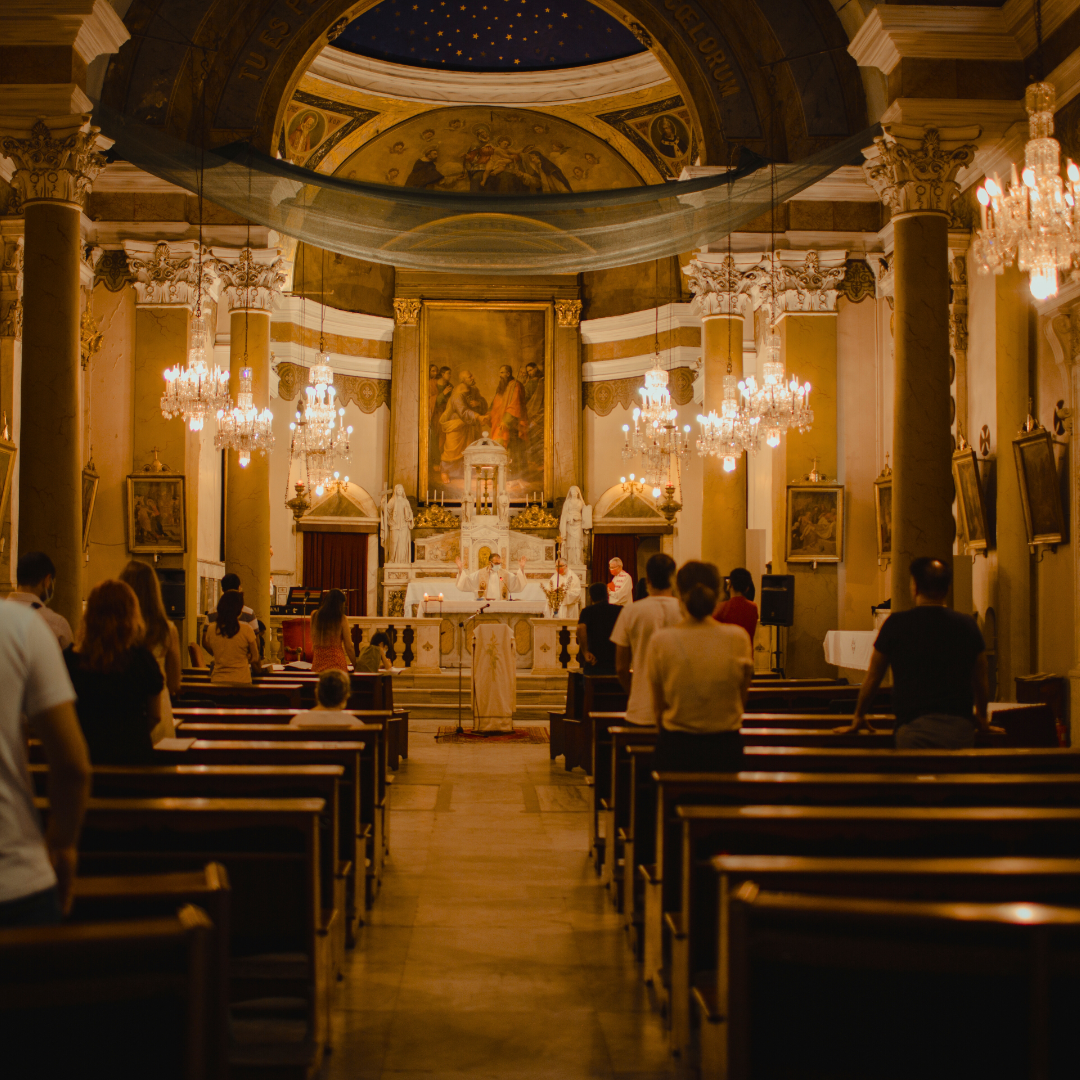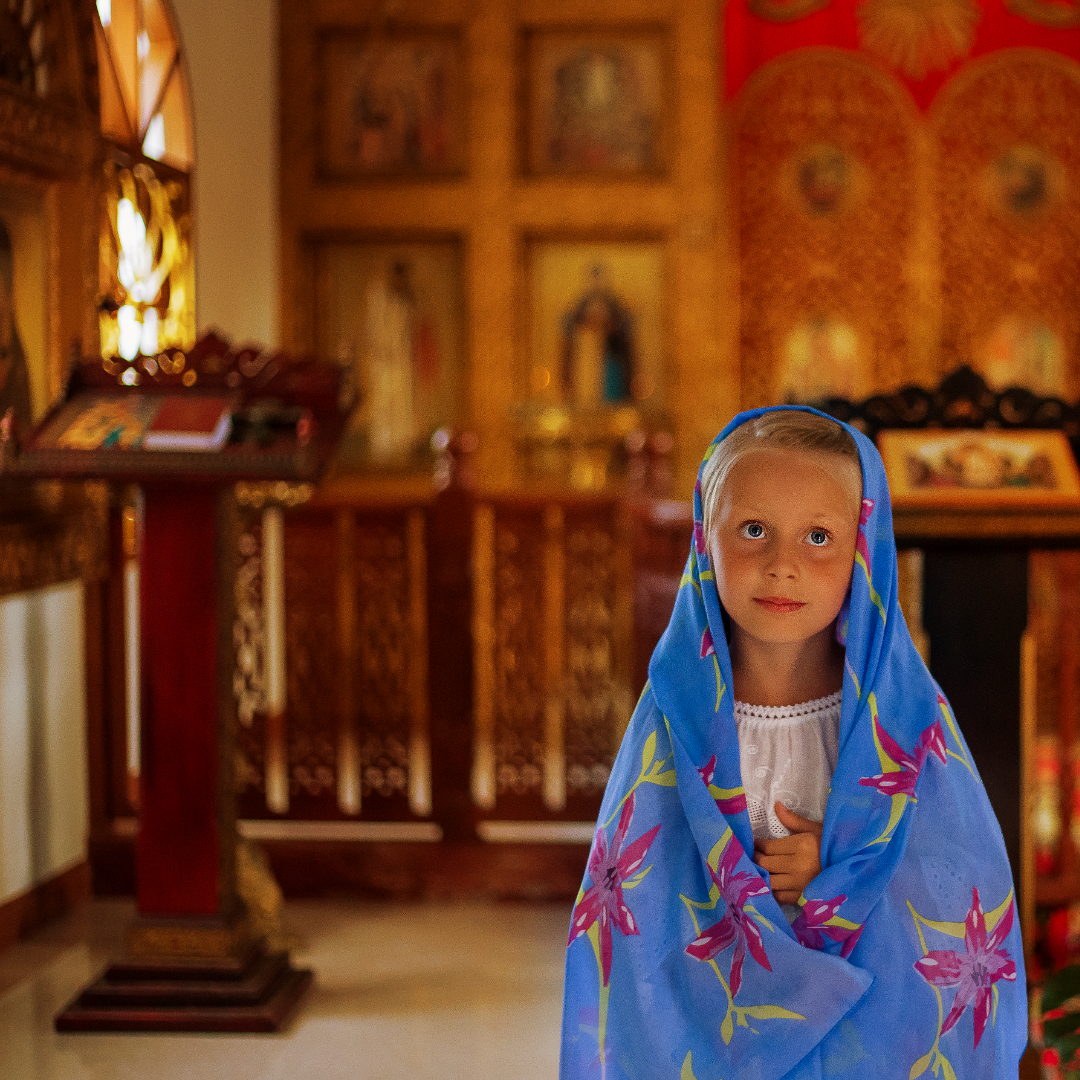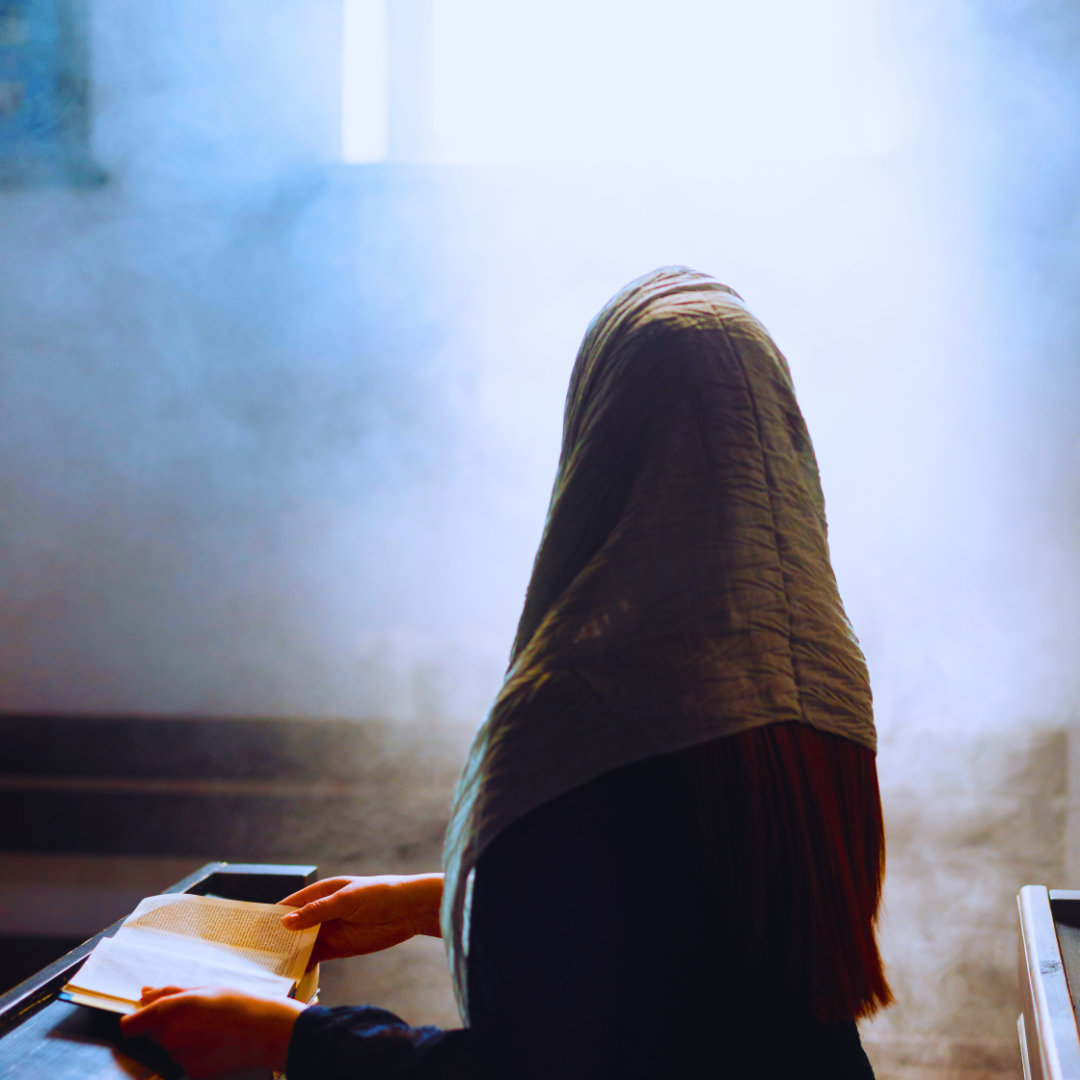
Sarah Damm shares her inspiration for wearing a veil while attending Mass.
I stood at the kitchen sink, washing dishes after dinner. My 17-year-old daughter sat on a stool at the adjacent counter.
“Do you know what I’ve been thinking about?” I asked.
“What?” She responded with interest.
“I think I want to start wearing a veil to Mass,” I said.
“Really? I’ve been thinking about that, too,” she answered to my surprise.
As our conversation continued, we talked about when our desire to veil began. We exchanged information that we read about veiling. And it ended with my daughter helping me choose my first veil from an online vendor.
This conversation between mother and daughter occurred during Lent 2023. By Holy Week, I started veiling at Mass, and shortly after Easter, she began donning a veil each Sunday.
But how did we become inspired to veil in the first place?
Returning to Tradition
In summer 2020, my family and I began attending the Traditional Latin Mass (TLM).
The journey to fully integrate into traditional Catholicism is ongoing. But during the past three years, we have discovered the roots of our Catholic heritage and inheritance. In addition to the Mass of the Ages, we also have uncovered a new depth and richness to the Catholic faith via prayers, devotions, feast days, and other customs that has made our experience of Christ’s Church “ever ancient, ever new.” (St. Augustine)
One of these Catholic customs was veiling.
At some point, God quietly planted a seed of faith in my heart, which was the desire to veil at Mass. This desire grew over time, until it blossomed into a noticeable conviction.
But what was behind this desire? And why was it growing?

An Invitation to Go Deep
As I began to settle into the beauty and rhythm of the quiet, traditional liturgy, I began to understand more and more that the Mass itself is not about me or what I get out of it. Mass is about the worship of God.
As the Mass became a more prayerful, contemplative experience for me, I wanted to increase my reverence for God. Wearing a veil was part of this.
Now, when I place a veil over my head, it physically reminds me that I am entering a space reserved for God. It is the most important hour of my week, a special time set apart exclusively for worshiping the Lord. The veil focuses my attention, and it frees me from distraction.
More Than a Personal Decision
My decision to veil has a lot to do with my personal relationship with the Lord, because I felt a prompting to do so by His invitation.
Yet, I also realized that “practices in the Catholic Church do not grow without a reason or theology behind them.” (The Chapel Veil: The Symbol of the Spouse of Christ)
And I wanted to understand the meaning and history behind this timeless practice. I wanted to connect with the reasons why women have veiled from Biblical times through much of the Catholic Church’s 2,000-year-old history.
I quickly discovered that at the heart of veiling is the notion that holy things are veiled. And women are counted among those holy things.
Holy Things Are Veiled
The deepest roots of the practice of veiling come from Sacred Scripture, where we see that “holy things were veiled in order to preserve their proper mystery and to show that they are set apart.”
For example, the Holy of Holies in the Temple was veiled by a curtain, while Mount Sinai was veiled by clouds.
In addition, Mary, the Mother of God, is always portrayed wearing a veil, which “is because Mary is the holiest of human persons.”
One name for Mary is Ark of the New Covenant. She is considered a living tabernacle, because she carried Jesus, God Incarnate, in her womb. In our churches today, tabernacles are kept veiled, because they also house Jesus, truly present in the Holy Eucharist.
Likewise, since women are called to imitate Mary, and since we can carry life within us, our feminine dignity merits the donning of a veil, too.

A Feminine Privilege
While the custom of veiling diminished around the time of the Second Vatican Council, the mandate for women to wear veils was dropped without explanation in the 1983 revision of canon law.
Some think that the veil is just a fabricated symbol to show that men are superior to women. But this assumption is misguided, for “the Church has always exalted the role of women.” And the veil’s Biblical and Marian roots prove it.
The veil is an outward sign of a woman's beauty that was created by Beauty Itself. It also expresses her unique relationship with Christ and her husband as authentically feminine, profoundly dignified, and worthy of honor. For those who are unmarried, the veil represents a woman’s commitment to purity.
Have you been curious about veiling? Or have you been thinking about wearing one at Mass? Here are three additional resources to learn more:
- The Theology Behind Women Wearing Veils in Church
- Four Ways the Traditional Latin Mass Honors Womanhood
- Why a New Generation of Catholic Women Is Wearing Chapel Veils

Copyright 2023 Sarah Damm
Images: Canva
This article contains Amazon affiliate links, which provide a small compensation to the author of this piece when purchases are made through the links, at no cost to you. Thank you for supporting our Catholic Mom writers in this way.
About the Author

Sarah Damm
Sarah Damm is a Catholic wife and mother of six children, living in Minnesota. She spends her days running errands, helping with homework, and keeping up with laundry and the family schedule. Sarah loves her faith, coffee, and good books. You can find out more about her at SarahDamm.com.


.png?width=1806&height=731&name=CatholicMom_hcfm_logo1_pos_871c_2728c%20(002).png)
Comments